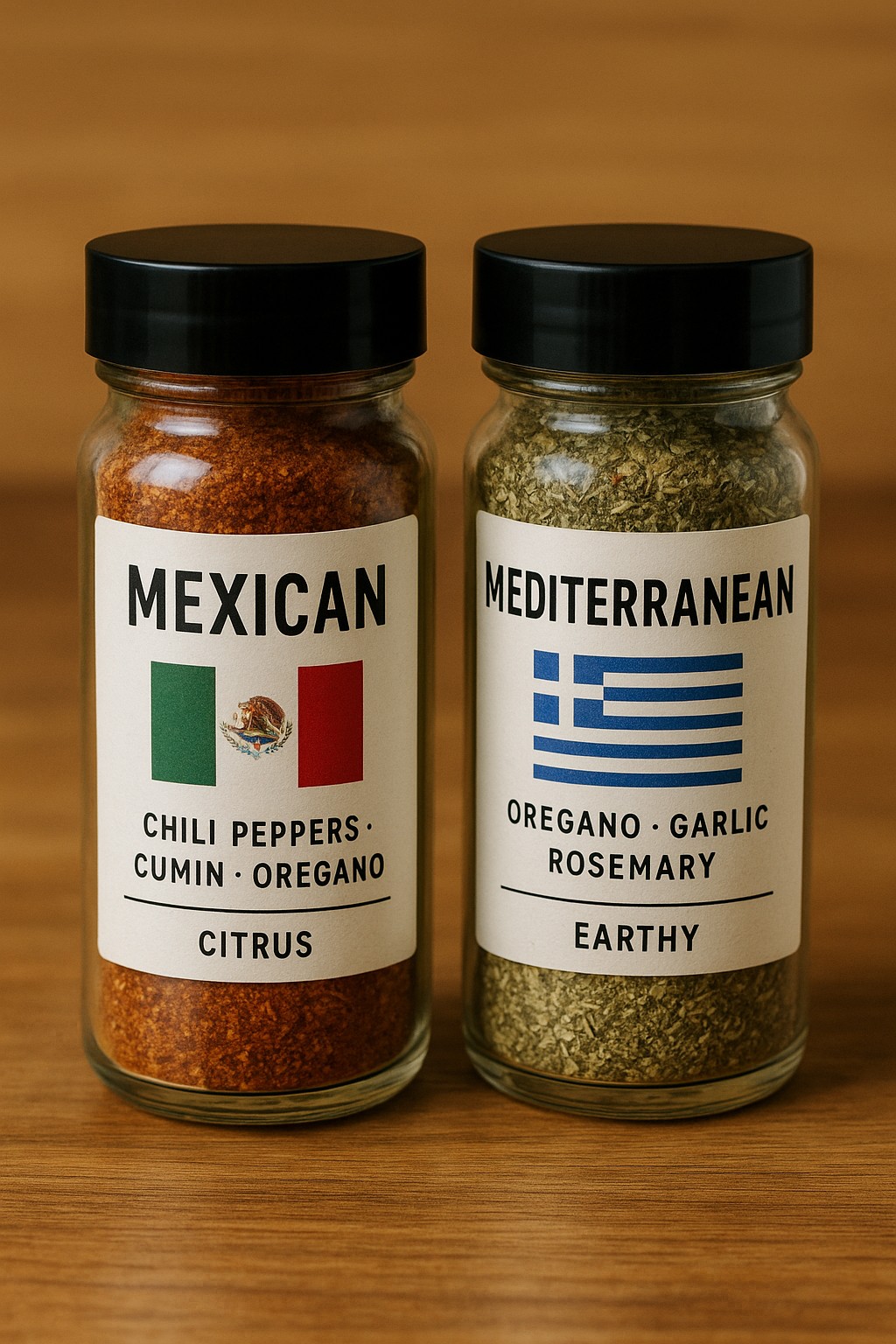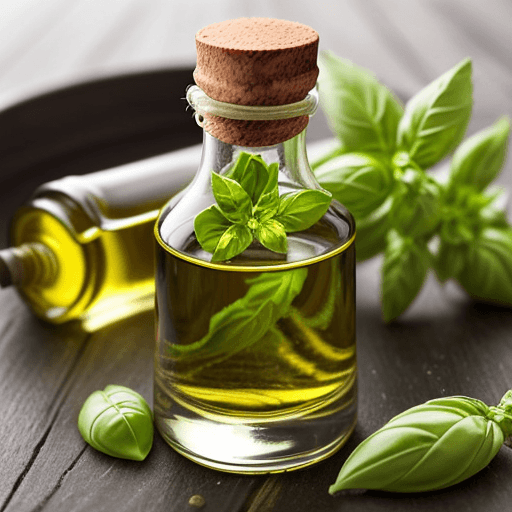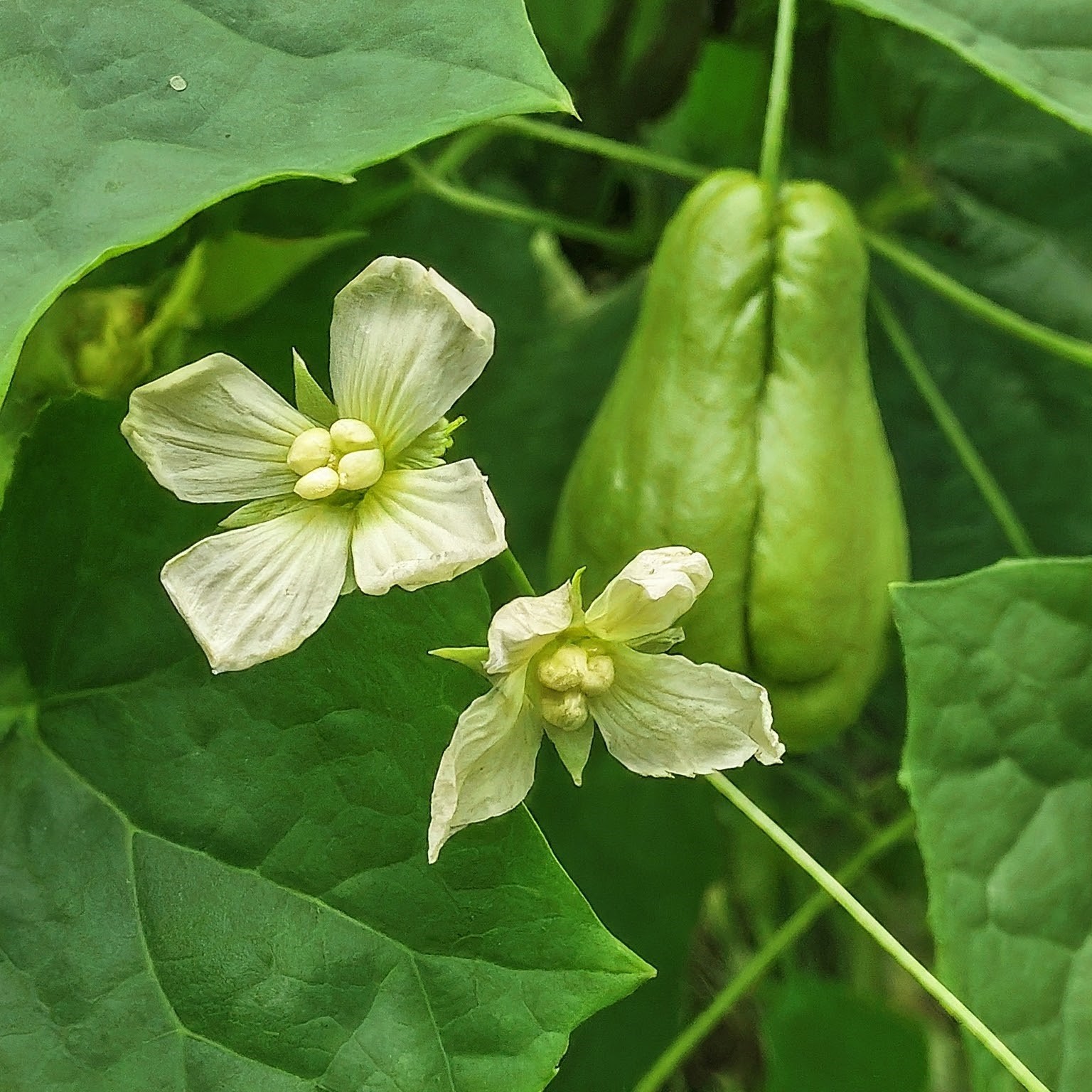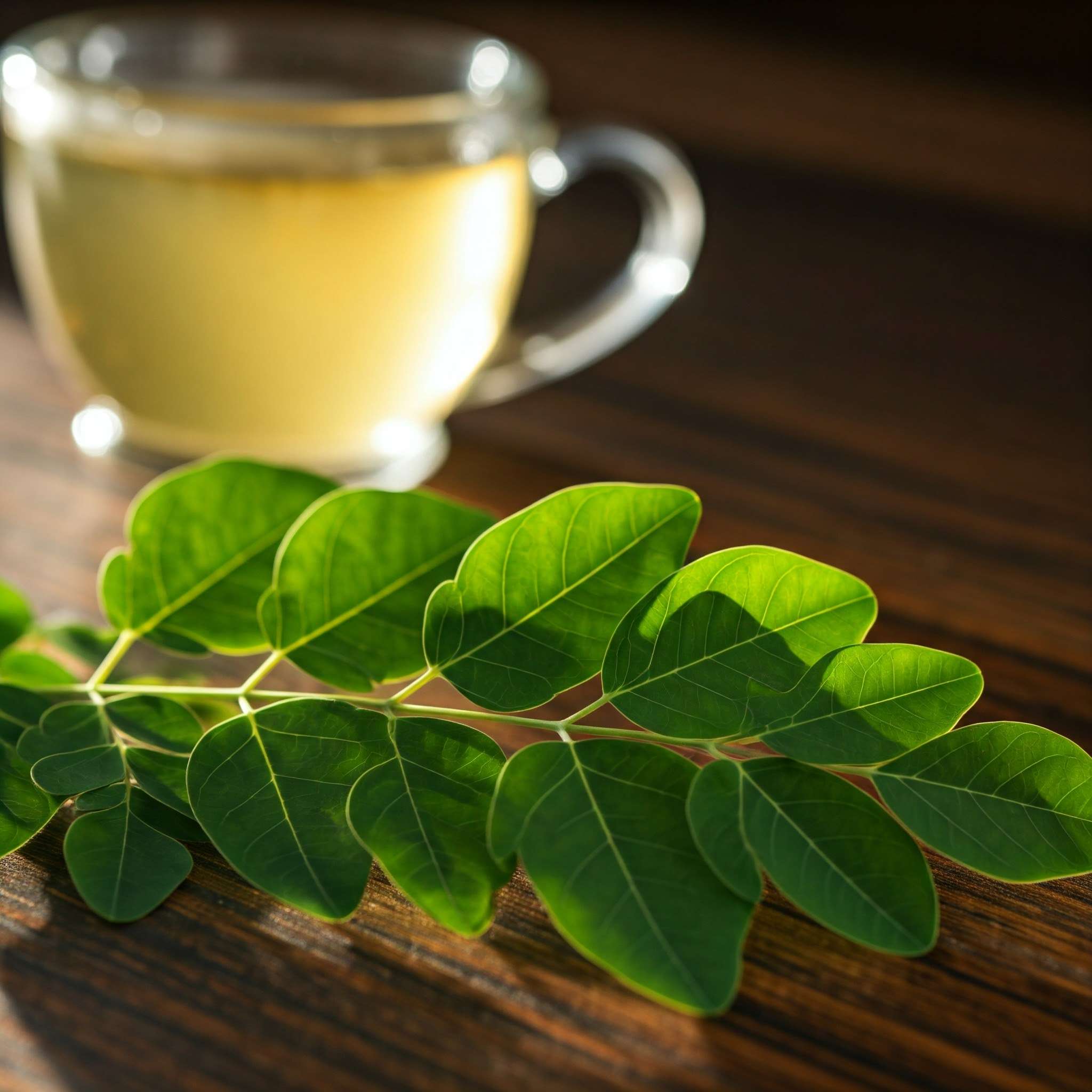Coriander seeds are aromatic spice seeds with a warm, citrusy flavor, widely used in culinary recipes and known for their digestive and anti-inflammatory benefits.
What is Coriander
Coriander, also known as cilantro in some regions, is an aromatic herb widely used in cooking and medicinal applications. Its leaves are vibrant green with a distinctive, fresh aroma, while its seeds are used as a spice with a warm, citrusy flavor. This spice is popular in cuisines around the world, including Indian, Mexican, and Middle Eastern dishes.
Coriander Powder
Coriander powder, the finely ground essence of whole seeds, is a kitchen magician. It adds a symphony of flavors – warm, earthy, nutty, and a touch of citrus – that elevates any dish. But it’s magic goes beyond taste. Did you know both the fragrant cilantro leaves and the tiny seeds come from the same plant (Coriandrum sativum)? Talk about versatility!
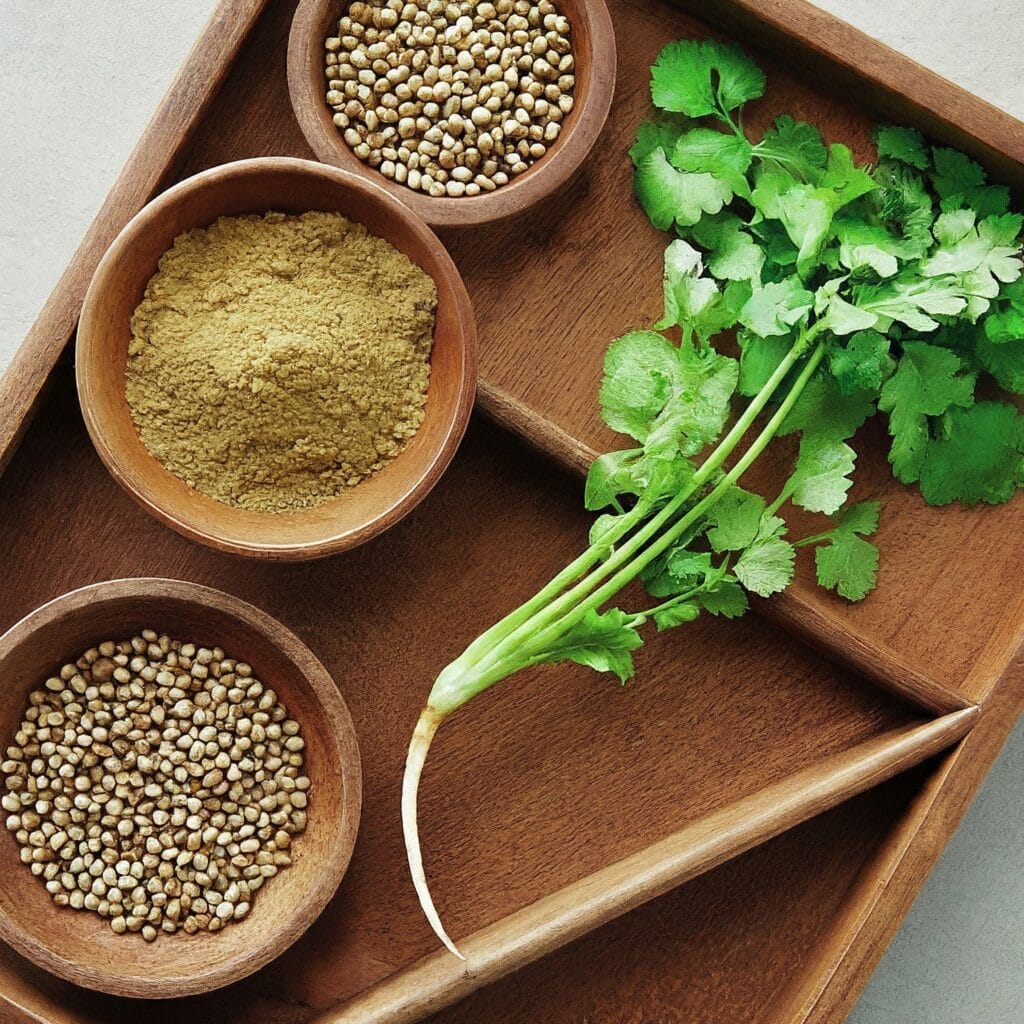
Coriander vs Cilantro
Both come from the same plant, Coriandrum sativum, but they refer to different parts of it. This distinction is important for culinary uses and nutritional content.
- Cilantro: This term refers to the fresh leaves and stems of the plant. It’s commonly used in a variety of cuisines for its fresh, bright flavor. Cilantro is typically used as a garnish or added to dishes for an herbal note.
- Coriander: This term refers to the seeds of the same plant. These seeds are dried and used as a spice in cooking. They have a warm, citrusy flavor and are often ground into a powder to season dishes.
- Fun Fact: In the US, “cilantro” refers to the leaves, while “coriander” refers to the seeds. But across the pond, things are flipped! Understanding this little difference can save you some confusion in the kitchen.
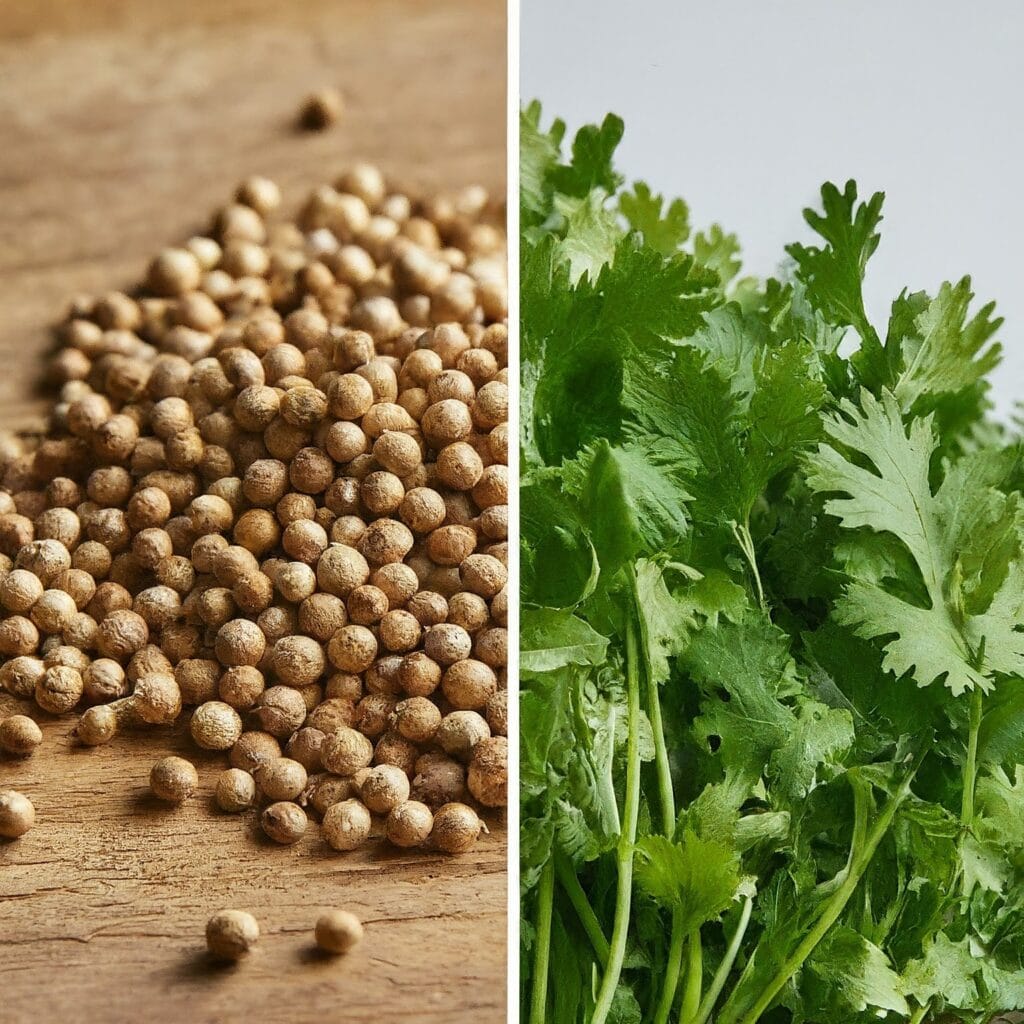
Nutritional Profile
Here’s a combined table that highlights the nutritional profiles of both cilantro (leaves) and coriander (seeds) per 100 grams:
| Nutrient | Cilantro (Leaves) | Coriander (Seeds) |
| Calories | 23 kcal | 298 kcal |
| Fiber | 2.8 g | 41.9 g |
| Fat | 0.5 g | 17.8 g |
| Protein | 2.1 g | 12.4 g |
| Vitamin A | 6747 IU (225% DV) | 0 IU |
| Vitamin C | 27 mg (45% DV) | 21 mg (35% DV) |
| Vitamin K | 310 µg (258% DV) | 135 µg (112% DV) |
| Folate (Vitamin B9) | 172 µg (43% DV) | 0 µg |
| Vitamin B6 | 0.2 mg (11% DV) | 0.5 mg (25% DV) |
| Iron | 1.8 mg (22% DV) | 16.3 mg (204% DV) |
| Manganese | 1.3 mg (18% DV) | 1.9 mg (95% DV) |
| Calcium | 67 mg (7% DV) | 709 mg (71% DV) |
| Magnesium | 26 mg (7% DV) | 330 mg (83% DV) |
| Phosphorus | 98 mg (10% DV) | 409 mg (41% DV) |
| Potassium | 521 mg (15% DV) | 1267 mg (36% DV) |
| Copper | 0.4 mg (18% DV) | 1.1 mg (55% DV) |
Beyond Curry:
It isn’t just for Indian food. It’s a global culinary treasure! From Moroccan tagines to vibrant Mexican salsas, coriander adds depth and complexity to dishes worldwide. Imagine sprinkling it over a sizzling steak or delicately folding it into a fragrant fish stew. The possibilities are endless!
Flavor Potential
Want to take your coriander game to the next level? Here are some secrets:
- Toasting: Heat the coriander seeds in a dry pan before grinding for an extra burst of aroma and flavor.
- Fresh is Best: opt for whole seeds and grind them yourself for most freshness. Pre-ground coriander loses its potency over time.
- Spice Bud Symphony: It doesn’t like to play solo. Pair it with other spices like cumin, turmeric, or chili powder for an explosion of flavor.
- It’s not just a flavor bomb; it’s packed with health benefits too! It’s a natural antioxidant, promotes healthy digestion, and even help manage blood sugar.
Coriander Substitute
Are you out of coriander but still want to add that delightful flavor to your dish? Don’t worry, we’ve got you covered! Let’s dive into some fantastic alternatives that will make your recipes shine.
Substitute Leaves
1. Italian Parsley:
This herb boasts a mild flavor reminiscent of coriander, making it an excellent substitute. Plus, its vibrant green color adds a fresh touch to any dish.
2. Dill and Tarragon:
These herbs offer unique flavors that can complement your dish in the absence of cilantro. Dill adds a hint of tanginess, while tarragon provides a slightly sweet and peppery note.
Exploring Seed Alternatives
1. Caraway Seeds:
If you’re looking for a substitute with a slightly different flavor profile, caraway seeds are a great option. They bring a warm, earthy taste to your dishes, elevating them to new heights.
2. Ground Cumin:
Known for its strong aroma and warm, slightly nutty flavor, ground cumin is another excellent substitute for coriander seeds. It adds depth and richness to your recipes, enhancing their overall taste.
Other Flavorful Options
1. Fennel Seeds:
These seeds offer a sweet, licorice-like flavor that can mimic the aromatic qualities of coriander. They bring a unique twist to your dishes, making them stand out.
2. Cloves:
While cloves have a distinct taste, they can still be used as a substitute for these seeds in certain recipes. Their strong, pungent flavor adds depth and complexity to your dishes.
3. Curry Powder:
A blend of various spices, including coriander, curry powder can be used as a convenient substitute. It brings a burst of flavor to your dishes, giving them a deliciously exotic touch.
In conclusion, whether you’re looking for a substitute for coriander leaves or seeds, there are plenty of options to choose from. Experiment with these alternatives to discover new flavor combinations and take your culinary creations to the next level!
Cooking with Coriander:
Its distinctive sourness and warm flavor have long been loved in kitchens around the world for its ability to transform dishes with a delicious aromatic punch. Whether you’re an experienced chef or an enthusiastic home cook, adding its powder to your culinary arsenal can open up a world of delicious possibilities.
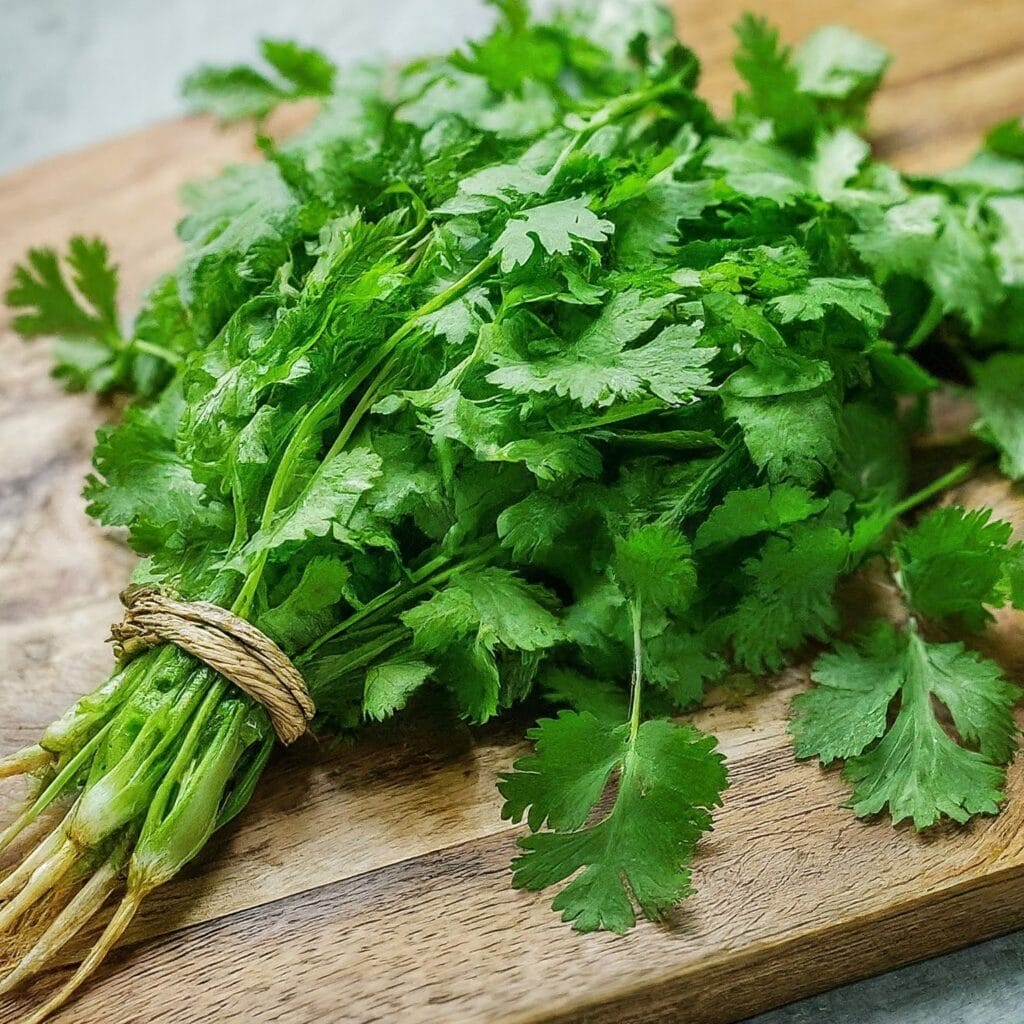
Enhancing Flavor:
A staple in cuisines across the globe, brings a unique and aromatic flavor to dishes. Whether you’re in the United States, Europe, or any other Western country, incorporating this versatile spice can elevate your cooking to new heights. Here are some tips to make the most of cilantro in your culinary adventures.
Toasting or Frying for Intensified Flavor
Unlock the full potential of magical seeds by toasting or frying them before use. Heating them in a dry skillet or frying them in oil helps release their aromatic oils, enhancing their pungency. This step adds depth and complexity to your dishes, making them truly memorable.
Proper Storage for Longevity
Like all spices, it requires proper storage to keep its freshness and flavor. Keep it away from light and moisture by storing it in an airtight container in a cool, dark cupboard. Whole seeds can last for several years, while ground coriander retains its potency for about a year when stored correctly.
Maximum Flavor: opt for Whole Coriander Seeds
For optimal flavor retention, opt for whole coriander seeds and grind them yourself as needed. This ensures that you experience the full spectrum of flavors coriander has to offer. But, if using pre-ground seeds, only buy what you need for immediate use to prevent flavor degradation over time.
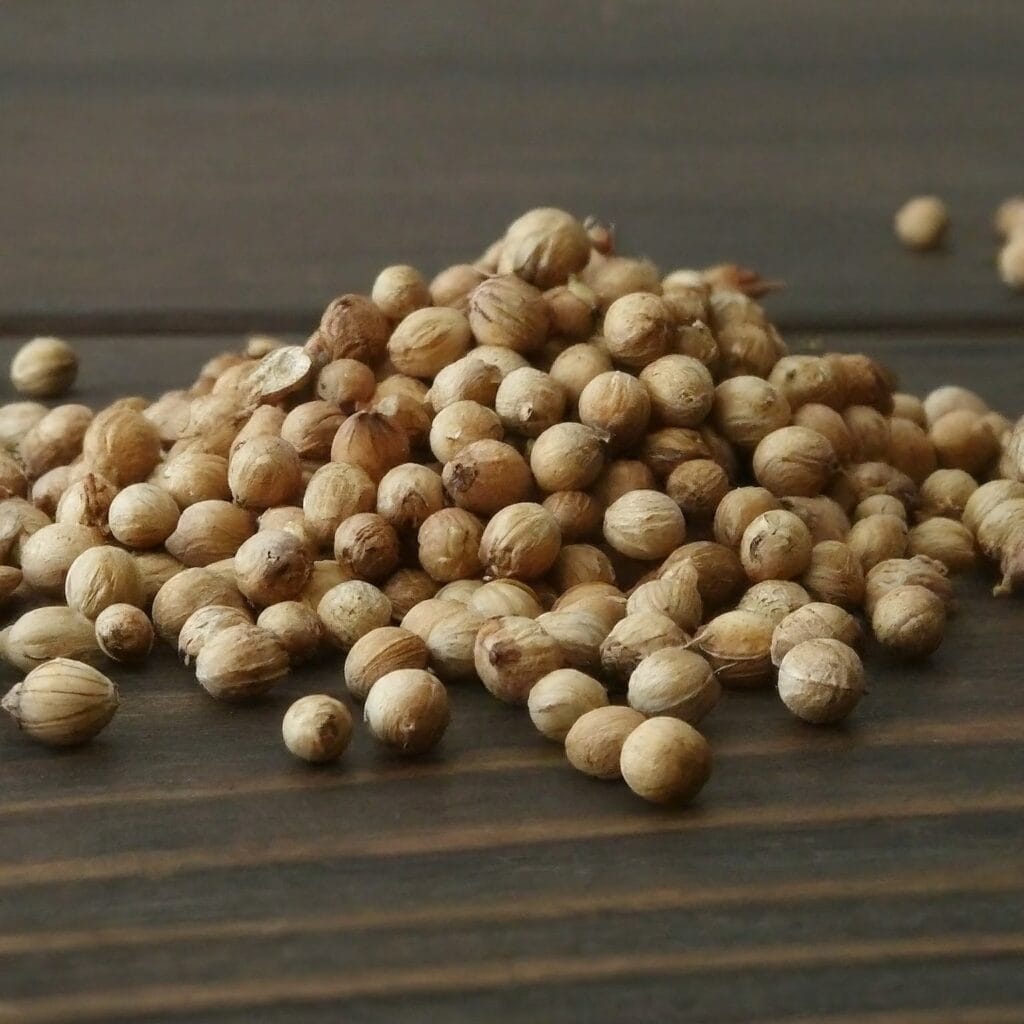
Pairing with Complementary Spices
CorianCoriander is rarely used alone; it thrives when paired with complementary spices. Whether crafting an Indian curry or a Latin American marinade, it pairs beautifully with cumin and an array of other spices. Experiment with different combinations to create unique flavor profiles that tantalize the taste buds.
Incorporate these tips into your cooking routine to harness the full potential of this powder and elevate your dishes with its aromatic and flavorful essence.
Coriander Seed Recipes:
Here are a few easy-to-follow recipes featuring coriander powder, showcasing its versatility across different cuisines:
1. Moroccan Chickpea Carrot Stew
This hearty vegetarian stew is bursting with Moroccan flavors, it adds a warm, earthy touch that complements the sweetness of carrots and chickpeas.
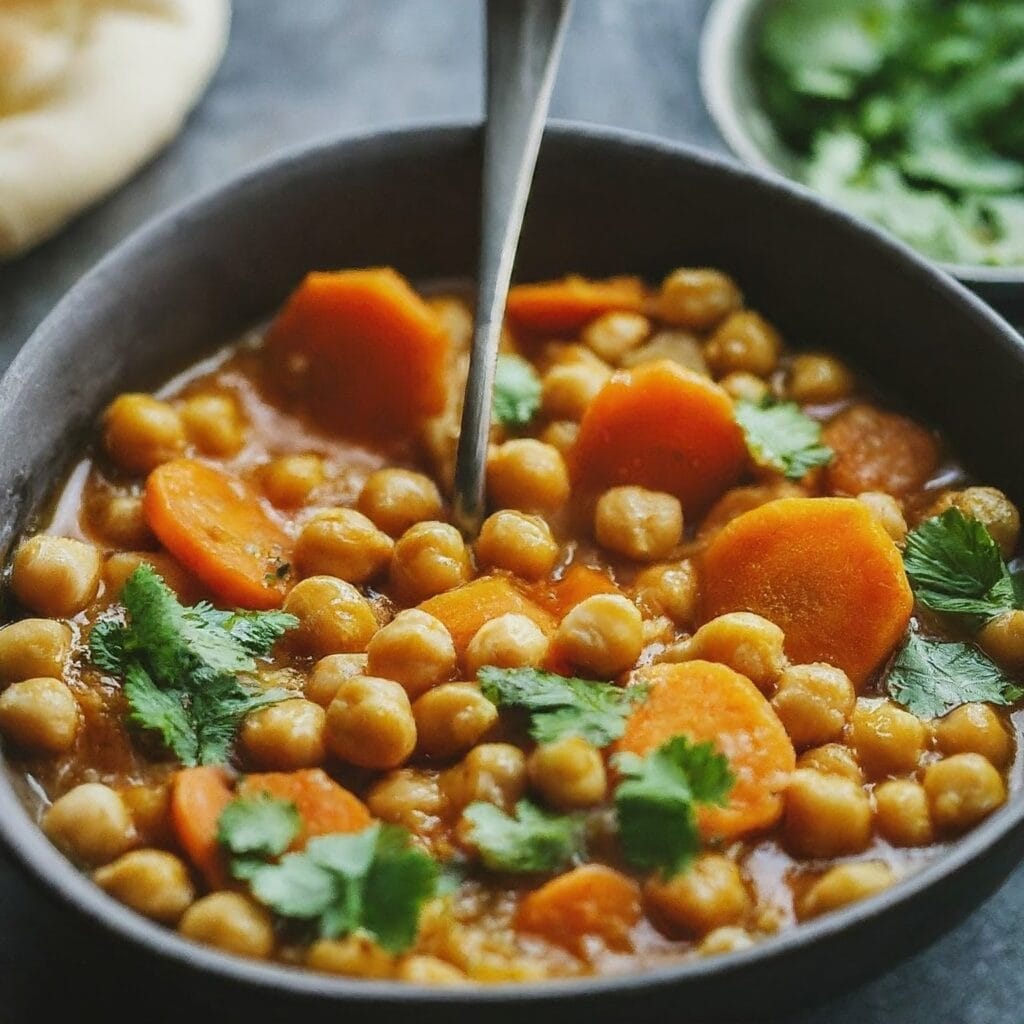
Ingredients:
- 1 tbsp. olive oil
- 1 onion, chopped
- 2 cloves garlic, minced
- 1 tsp ground ginger
- 1 tsp ground cumin
- 1/2 tsp turmeric
- 1/2 tsp ground coriander
- 1/4 tsp cayenne pepper (optional)
- 1 (14.5 oz.) can diced tomatoes, undrained
- 4 cups vegetable broth
- 1 (15 oz) can chickpeas, drained and rinsed
- 2 large carrots, peeled and chopped
- 1/2 cup chopped fresh cilantro
- Salt and pepper to taste
Instructions:
- Heat olive oil in a large pot over medium heat. Add onion and cook until softened, about 5 minutes.
- Stir in garlic, ginger, cumin, turmeric, coriander, and cayenne pepper (if using). Cook for 1 minute, allowing spices to become fragrant.
- Add diced tomatoes, vegetable broth, chickpeas, and carrots. Bring to a boil, then reduce heat and simmer for 20-25 minutes, or until carrots are tender.
- Stir in chopped cilantro and season with salt and pepper to taste.
Serve hot over rice or couscous.
2. Mexican Street Corn Salad
This vibrant salad captures the essence of Mexican street food. It brightens up the dressing, complementing the sweetness of corn and the smokiness of chili powder.
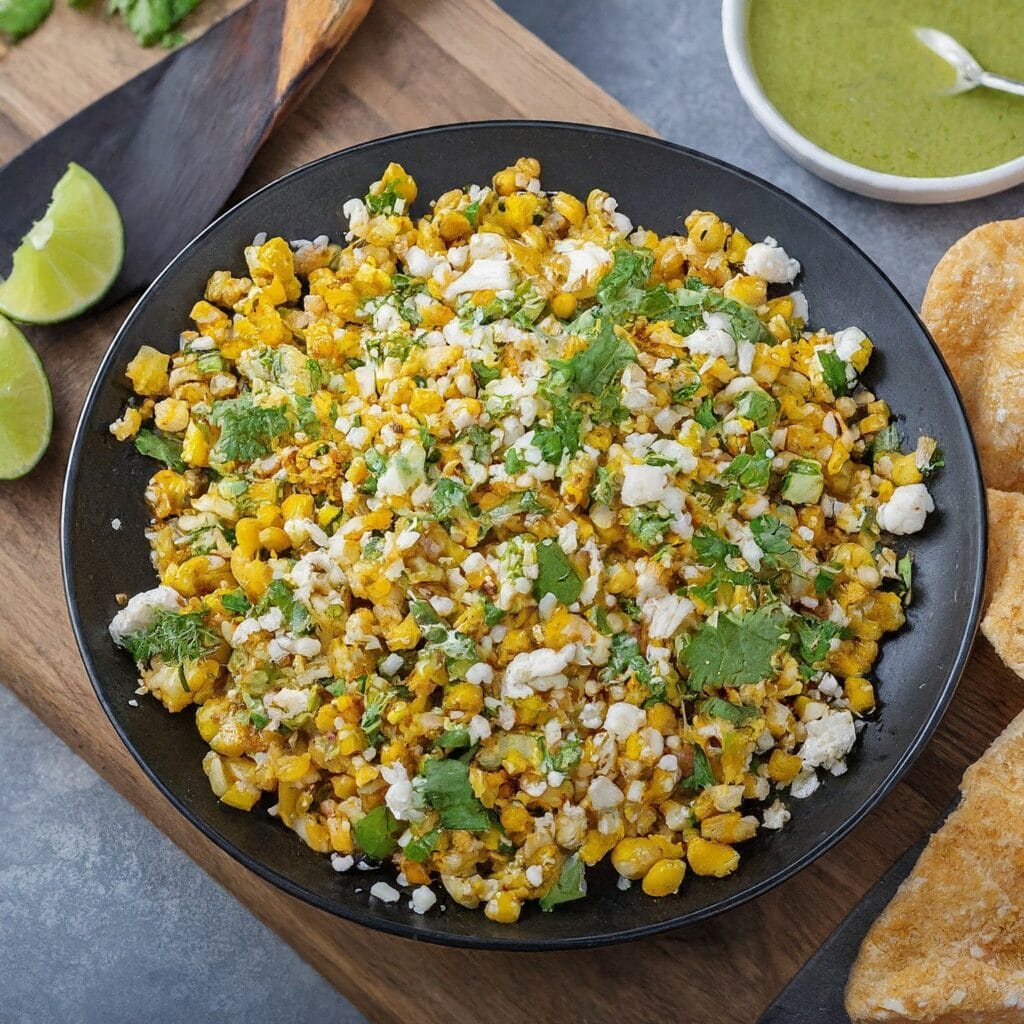
Ingredients:
- 4 ears of corn on the cob, cooked and kernels removed
- 1 avocado, diced
- 1/2 cup cherry tomatoes, halved
- 1/4 cup crumbled queso fresco or feta cheese
- 1/4 cup chopped red onion
- 1/4 cup chopped fresh cilantro
For the vinaigrette:
- 2 tbsp olive oil
- 1 tbsp lime juice
- 1/2 tsp ground cumin
- 1/4 tsp chili powder
- 1/4 tsp garlic powder
- 1/4 tsp dried oregano
- Pinch of salt and pepper
Instructions:
- In a large bowl, combine corn kernels, avocado, cherry tomatoes, cheese, red onion, and cilantro.
- In a small bowl, whisk together olive oil, lime juice, cumin, chili powder, garlic powder, oregano, salt, and pepper.
- Pour the vinaigrette over the salad and toss to coat.
- Serve chilled or at room temperature.
3. Indian-Spiced Lentil Soup with Cilantro
This comforting lentil soup is packed with flavor and healthy protein. Cilantro adds a warm, citrusy note that enhances the savory taste of lentils and spices.

Ingredients:
- 1 tbsp olive oil
- 1 onion, chopped
- 2 cloves garlic, minced
- 1 tsp ground cumin
- 1/2 tsp turmeric
- 1/2 tsp ground coriander
- 1/4 tsp ground ginger
- 1 (14.5 oz) can diced tomatoes, undrained
- 4 cups vegetable broth
- 1 cup brown lentils, rinsed
- 1 (15 oz) can coconut milk (optional)
- 1 tsp garam masala
- Salt and pepper to taste
- Chopped fresh cilantro, for garnish
Instructions:
- Heat olive oil in a large pot over medium heat. Add onion and cook until softened, about 5 minutes.
- Stir in garlic, cumin, turmeric, coriander, and ginger. Cook for 1 minute, allowing spices to become fragrant.
- Add diced tomatoes, vegetable broth, lentils, and coconut milk (if using). Bring to a boil, then reduce heat and simmer for 30-35 minutes, or until lentils are tender.
- Stir in garam masala and season with salt and pepper to taste.
- Serve hot, garnished with chopped fresh cilantro.
These are just a few ideas to get you started. With its versatility, this powder can be incorporated into countless dishes, from simple salads to complex curries. So, unleash your creativity and explore the world of flavor with coriander powder!
Health Benefits of Coriander:
It isn’t just a flavor bomb; it’s packed with health benefits too! Here are some key advantages:
- Rich in Antioxidants: Protects your cells from damage.
- Digestion Superhero: Promotes smoother digestion and nutrient absorption.
- Supports Blood Sugar Management: help regulate blood sugar levels.
- Anti-Inflammatory Properties: Soothes inflammation in the body.
- Heart-Healthy Champion: help lower bad cholesterol and boost good cholesterol.
Supporting Evidence:
Many studies have highlighted the beneficial effects of this powder on cholesterol levels and cardiovascular health. For example, a study published in the “Journal of Environmental Science and Health, Part B” found that coriander supplementation significantly reduced LDL cholesterol levels in subjects with high cholesterol levels. Similarly, research published in the “Journal of Dietary Supplements” demonstrated that its consumption led to an increase in HDL cholesterol levels, further underscoring its potential as a heart-healthy dietary addition.
Key Takeaways
Incorporating coriander into your daily diet can contribute to maintaining healthy cholesterol levels, reducing the risk of heart disease, and supporting overall cardiovascular health. By harnessing its cholesterol-lowering and heart-protective properties, it emerges as a valuable ally in promoting a robust and resilient cardiovascular system.
This detailed explanation under the topic “Heart-Healthy Champion” covers the cholesterol-lowering and heart-protective benefits of coriander, supported by evidence from scientific studies.
Impact on Weight Reduction
While it provides many health benefits, including improved digestion and blood sugar management, its direct impact on weight reduction be indirect.
By supporting healthy digestion and blood sugar levels, it contributes to overall metabolic health, which is crucial for maintaining a healthy weight. Efficient digestion and stable blood sugar levels can help prevent overeating, reduce cravings for sugary or high-calorie foods, and promote balanced appetite regulation.
Moreover, the fiber content in this powder adds bulk to meals, promoting satiety and reducing the likelihood of excessive calorie intake. But it’s important to note that weight reduction is a multifaceted process influenced by various factors, including diet, physical activity, and overall lifestyle habits.
While it can be a valuable part of a weight management plan, it should be incorporated as part of a comprehensive approach that includes healthy eating and regular exercise.
Global Culinary Tradition:
While specifics on its health benefits in Native American and other Western cuisines may be scarce, its widespread use in global culinary traditions underscores its potential to spice up your health.
DIY Spice Blends
Harness the power of these seeds by adding it to homemade spice blends. Whether creating vibrant curry powder or flavorful taco seasoning, this blend can elevate your culinary creations.
Preservation Tips
To increase the shelf life and potency of coriander, store it in an airtight container, away from direct sunlight and moisture. Additionally, consider grinding whole coriander seeds as needed to keep most flavor.
Conclusion
It is not just a spice – it is a cornerstone of cooking, giving dishes around the world its unique flavor and aroma. Whether you’re an experienced chef or an aspiring home cook, adding this versatile ingredient to your repertoire will undoubtedly enhance your culinary creations. So, embrace the charm of coriander powder and embark on a delicious journey through the diverse landscape of global cuisine.
FAQs:
Where to buy coriander seeds?
You can buy from various online and offline stores. Here are a few options:
Amazon: They offer a variety of coriander seeds, including organic options. You can find brands like Minimal Whole Organic Coriander Seeds, Stylo Whole Organic Coriander Seeds, and more.
Flipkart: They also have a range of coriander seeds available.
Local Grocery Stores: Many local supermarkets and specialty spice stores carry coriander seeds.
Online Specialty Stores: Websites like Ugaoo and Seedbasket offer high-quality coriander seeds for purchase
How to call coriander powder in English?
In the culinary lingo of the U.S., “cilantro” and “coriander” play distinct roles. While “cilantro” is all about those fresh, vibrant (or sometimes dried) leaves that give a zesty lift to dishes, “coriander” takes on a different persona. The term “coriander” is reserved for the ground seeds of the plant, offering a warm, citrusy undertone to your culinary creations.
So next time you’re in the kitchen, remember cilantro for the leafy greens and coriander for that aromatic spice!
How long does coriander powder last?
There’s a fascinating scientific reason why some people dislike cilantro! A genetic variation affects taste perception, making cilantro taste soapy to some individuals.
Here are some alternatives to consider if you’re not a cilantro fan:
Italian Parsley: Offers a similar grassy character that can work in many dishes.
Tarragon: Adds a subtle licorice-like flavor, perfect for certain savory dishes.
Lime Zest: Provides a fresh, citrusy note that can complement coriander’s role in some recipes.
Don’t be discouraged! Experiment with these substitutes to find what works best for your taste buds.
Can I use fresh cilantro leaves instead of coriander powder?
Absolutely! Fresh cilantro leaves and its powder come from the same plant, but they offer distinct flavor profiles. It boasts a warmer, nuttier aroma, while fresh leaves have a brighter, citrusy taste.
Here’s a general substitution guide:
1 teaspoon ground powder = 1 tablespoon chopped fresh leaves
But the substitution not always be perfect depending on the dish. For garnishes or dishes where a fresh, citrusy note is desired, fresh leaves are the better choice. Conversely, for curries and stews where a deeper, warmer flavor is preferred, coriander powder shines.
Are there any side effects to consuming coriander powder?
This powder is safe for most people in normal culinary amounts. But some people experience allergic reactions. If you experience any discomfort after consuming coriander, stop using it and consult a healthcare professional.
Remember, these are just some of the most common questions. Feel free to explore further and discover the wonders of Magical Spice!
